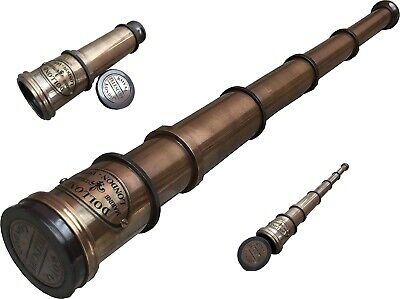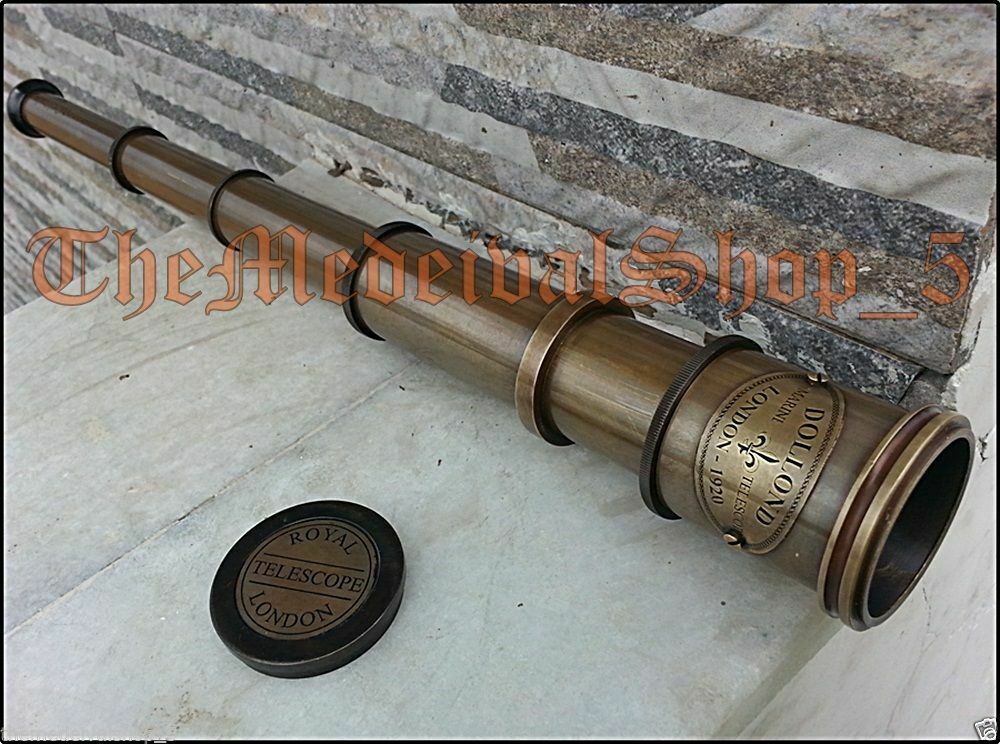-40%
Functional, 200 year old telescope by Cary of London.
$ 132
- Description
- Size Guide
Description
Functional, 200 year old telescope by Cary of London.This beautiful spyglass was made by the Cary family after the founding of the family business by William Cary in 1786 (Webster Signature Database - online). This telescope may well have been made during William Cary's tenure as he worked until the 1820s; however, it may also have been a product of the next generation. The inscription "Cary London", still legible if worn, suggests a date after 1800 when Cary and most other British makers used lettering running toward the eye lens cover.
Overall, this telescope is in excellent functional condition; however, there are some minor issues. Amazingly, there does not seem to be any cracks in the main tube mahogany, however, the finish on the main tube has clearly been redone. The telescope is essentially complete and appears to composed of largely original components, although the pin in the horizontal sliding eye lens cover is missing. The draws are in almost undented condition and open with remarkable smoothness.
Optically the telescope works almost as well as it did on the day the it was made perhaps 200 years ago. It forms a clear sharp image when focused by moving the smallest draw to the appropriate position. Consistent with high end telescopes and suggesting the lens is original, the achromatic objective is composed or three separate glass lenses. As seen in pic 5, a laser pointer shining through the lens shows a Christmas tree pattern with 4 bright central dots forming the trunk. These are reflective surfaces on the front and back as well as the junctions between the middle concave and outside convex lens. Very cool.
While functional regions of the objective lens are in good shape (pic 6, minor scratches), the rear most lens has number of scallop chips at the outer edges (visible in pic 7 at lower right and top left). This is probably due to the tattered state of the brass curled over the back lens, which created uneven pressure points. On the plus side, it was possible to bend the broken brass away from the lens, which allowed its removal and cleaning. On the down side, unless one is a two hundred year old telescope manufacturer, curling is no longer possible. To firmly and gently encase the lens, a black rubber gasket was placed behind the lens where it is wedged in place by the wood of the main tube (somewhat visible in pic 7 near the scallops). When the mounting around objective lenses decay, gaps occur which allow the entry of debris. The current configuration should form a tight seal around the lens preventing the need for cleaning in the foreseeable future.
Finally, in the last image, I show the telescope currently for sale (bottom), next to another Cary telescope (top). Notice the near identity, despite the fact the top telescope is older (inscription lettering running away from the eye lens cover - not shown). As I said, original Cary's.
The scope is almost 7.5 inches long when folded, about 23 inches long when extended and has an objective lens with a diameter of about 1 and 3/8 inches. It can be dissembled for cleaning if that should become necessary. Be sure to examine the images as they form an important part of the description.
Although shipping is listed as economy, items will generally be shipped priority if costs are comparable. I will consider sending the telescope to restricted countries if a buyer seems responsible and assumes shipping risks.



















